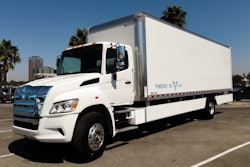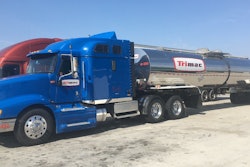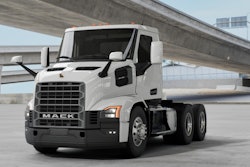
Walking the tightrope between cost-cutting and safety/operational efficiency is part of life as a fleet manager, but with the pandemic wreaking havoc on revenues through lost working days and supply chain disruptions, reducing operational costs has assumed critical significance.
There are numerous overheads in this line of work. The most prominent ones that spring to mind are fuel charges and asset maintenance costs. The good news is that they all offer different ways to optimize and cut down on operational expenses, albeit with varying levels of utility.
Here are five steps for fleet managers looking to reduce operation costs, each graded on a scale of 1 to 5 for their potential impact on your overhead:
Reduce fleet size
This should be your first port of call if you need to cut down on operating costs. After all, each additional vehicle adds thousands of dollars in total ownership costs each year, according to KPMG. Downsizing by even a few older models has the potential to attract big savings in terms of mileage, maintenance and driver expenses.
Of course, there is a trade-off involved here. Fewer vehicles mean more load on the rest of your fleet and a marginal increase in operating costs, but the net impact will remain largely positive, with fleet managers often reporting between 5% and 15% total cost reduction.
A major caveat here is that decisions about fleet size reductions are often beyond the remit of fleet managers. But you can still influence by managing "surplus" vehicles that often tend to accumulate in even medium-sized fleets, due to driver terminations, expansion, acquisitions, etc.
Rating: 4/5
Exercise control over distance covered
In the past, fleet managers did not have direct visibility over daily fleet operations data. You could not keep track of every mile covered by all the vehicles in your fleet. This often encouraged a tendency to use company vehicles for non-essential or personal purposes.
With increased connectivity and GPS tracking this is no longer an issue. Using technology, businesses can now optimize routes like never before, cutting down on mileage and fuel costs. Telemetry data also allows fleet managers to effectively discourage frivolous usage of vehicles.
Even a simple policy of mandatory mileage audits can have a huge impact with minimal extra investment. For best results on this front, managers should work closely with their driver management teams, arriving at practical solutions that do not kill employee morale.
Rating: 2/5
Improve fuel consumption and emissions
With fuel costs accounting for the lion’s share of operating costs for many fleets, this step may seem like a no-brainer. But if you are looking for quick results, fuel usage is not the best candidate for change.
There are many options in this area - switch to “greener" fuels, more efficient hybrid engines, lighter vehicles, and so on. But they all require an initial investment, which may not be forthcoming in the present economic situation.
But fleet managers cannot afford to ignore this aspect, in an age when the entire auto industry is evolving. Long-term plans to upgrade fleets are a priority, even if the ROI will take some time to manifest.
Rating: 2/5
Use CMMS for efficient maintenance
Maintenance is a vital function that has a value multiplier effect on your fleet – it improves productivity, reduces accident risk, and increases the longevity/resale value of vehicles. It is also an incredibly complex task, with huge potential for waste and inefficiency.
A Computerized Maintenance Management Software (CMMS) is mandatory if you want to boost savings here without compromising on safety. Dedicated CMMS solutions give you full visibility on your fleet's maintenance status, with automated scheduling, real-time data alerts, and other advanced optimization options.
It also paves the way for more efficient predictive maintenance – using performance metrics, sensor data, and AI analysis to schedule efficient on-time maintenance. The cost savings can be significant, from reduced use of spares, smaller repair bills, and improved reporting.
Rating: 3.5/5
Improve vehicle resale value
With smarter, CMMS-empowered maintenance schedules, fleet managers can achieve a secondary benefit in the form of higher resale value vehicles. This metric is vital as it has a direct bearing on the TCO of a vehicle.
There are other ways besides prompt maintenance to boost the resale value of vehicles: maintenance of proper vehicle records, repair schedule information and strict usage policies all contribute. Instead of selling everything at auction, firms can opt to sell a portion directly to employees and get savings on fees.
Incidentally, the color choice of vehicles can also play a significant role in their resale value. Neutral colors like white or popular shades like blue/red make vehicles more desirable in the eyes of many buyers. This could be a major factor to consider during fleet upgrades or expansion.
Rating: 2.5/5
The transport and logistics industry has played a vital role in propping up the global economy in the face of unprecedented challenges. While the prognosis is not as grim as other sectors like retail or hospitality, firms here still need to exercise extra caution with their finances going forward.
Fleet managers can make a decisive impact here, combining sensible and proven strategies with modern technology. A balanced cost reduction approach that combines short-term gains with long-term ROI is certainly possible.
Bryan Christiansen is the founder and CEO of Limble CMMS. Limble is a modern, easy to use mobile CMMS software that takes the stress and chaos out of maintenance by helping managers organize, automate, and streamline their maintenance operations.













